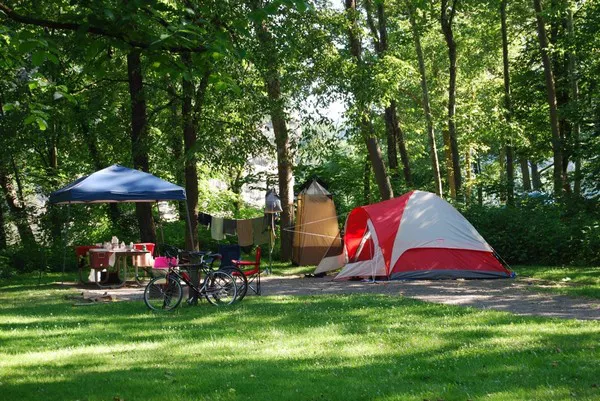Camping is an excellent way to connect with nature, unwind, and enjoy the great outdoors. But how much does it actually cost to rent a camping spot? The answer varies widely based on several factors, including the location, amenities, and season. This guide will break down the costs associated with renting a camping spot, provide examples of different campgrounds, offer tips for saving money, and list additional costs to consider. Whether you’re a seasoned camper or planning your first trip, understanding these factors will help you budget effectively for your outdoor adventure.
Factors Affecting Price
Location
State and National Parks: These are popular choices for campers and tend to offer a range of prices depending on the amenities and location. National parks often have fees for entrance in addition to campsite rental costs.
Private Campgrounds: These may offer more amenities and services than public parks but can be more expensive. Proximity to popular attractions or urban areas can also drive up the cost.
Proximity to Attractions: Camping spots near popular destinations such as beaches, lakes, or tourist spots may charge higher rates due to their prime location.
Amenities
Electricity and Water Hookups: Campsites with full hookups for RVs are usually more expensive than basic tent sites.
Showers and Restrooms: Campgrounds with modern facilities like hot showers and clean restrooms tend to charge higher rates.
Wi-Fi and Playground: Additional amenities such as Wi-Fi, playgrounds, and swimming pools can also increase the cost of a campsite.
Season
Peak Season: Summer is typically the peak camping season, and rates are highest during this time, especially in popular locations.
Off-Season: Camping during the spring or fall can be more affordable as rates are generally lower, and there are fewer crowds.
Campsite Type
RV Sites: These sites often come with hookups for electricity, water, and sewage, making them more expensive than tent sites.
Tent Sites: Basic tent sites without hookups are usually the most affordable option.
Group Sites: Designed for larger groups, these sites are priced higher but can be cost-effective when shared among several campers.
Primitive Sites: These are the most basic sites, often with no amenities, and are typically the least expensive.
Length of Stay
Nightly Rates: Most campgrounds charge by the night, with prices varying depending on the factors mentioned above.
Weekly Rates: Many campgrounds offer discounted rates for extended stays, which can be more economical if you’re planning a longer trip.
Average Cost Ranges
Basic Tent Sites
State and National Parks: $10 to $30 per night.
Private Campgrounds: $20 to $50 per night.
RV Sites with Full Hookups
State and National Parks: $20 to $50 per night.
Private Campgrounds: $40 to $80 per night.
Group Sites
State and National Parks: $50 to $150 per night, depending on the number of people.
Private Campgrounds: $100 to $300 per night.
Examples of Specific Campgrounds
Here are a few examples to give you a better idea of what to expect:
Yosemite National Park (CA): Tent sites range from $18 to $26 per night, while RV sites are around $36 per night.
KOA Campgrounds: Prices for a basic tent site start at around $35 per night, while full hookup RV sites can go up to $80 or more, depending on the location.
Great Smoky Mountains National Park (TN/NC): Tent sites range from $17 to $25 per night, with no hookups available.
Tips for Saving Money
Consider Camping in Less Popular Locations
Choosing a campsite in a less popular area can significantly reduce costs. State parks or less well-known national forests often offer lower rates than highly trafficked national parks.
Camp During the Off-Season
Camping in the spring or fall not only offers cooler temperatures and fewer crowds but also lower prices. Many campgrounds offer reduced rates during these periods.
Book in Advance
Many campgrounds offer discounts for early bookings, especially for longer stays. Planning ahead can secure these savings and ensure you get a spot at your desired campground.
Look for Campgrounds with Free Amenities
Some campgrounds include amenities such as showers, Wi-Fi, and picnic areas at no additional charge. Choosing a campground with these included can help you save on additional fees.
Join a Camping Club
Membership in camping clubs like Good Sam, Passport America, or AAA can offer discounts on campground fees at participating locations.
Campground Fees
Entry Fees: Some state and national parks charge an entrance fee, which is separate from the campsite rental cost.
Reservation Fees: Many campgrounds charge a small fee for making a reservation, which typically ranges from $5 to $10.
Parking Fees: Some campgrounds may charge an additional fee for parking extra vehicles.
Activities
Participating in activities such as hiking, fishing, or boating may come with additional costs:
Hiking Permits: Some areas require permits for certain trails, which may cost $5 to $20.
Fishing Licenses: A fishing license is often required and can range from $10 to $50, depending on the location and duration.
Boat Rentals: Renting a kayak, canoe, or boat may cost anywhere from $15 to $100 per hour.
Food and Supplies
Camping requires proper preparation, and there are costs associated with food and gear:
Grocery Shopping: Budget for meals, snacks, and beverages.
Camping Gear: If you don’t own camping equipment, you may need to rent or purchase items like tents, sleeping bags, and cooking gear.
Firewood: Many campgrounds sell firewood, typically for $5 to $10 per bundle.
SEE ALSO: What to Cook Camping for a Large Group
Conclusion
Renting a camping spot can vary widely in cost depending on location, amenities, season, and campsite type. By understanding these factors and planning ahead, you can budget effectively and enjoy a memorable camping experience. Whether you’re looking for a primitive tent site in a secluded state park or a full-service RV spot near a popular attraction, there’s a camping option to fit your budget.

